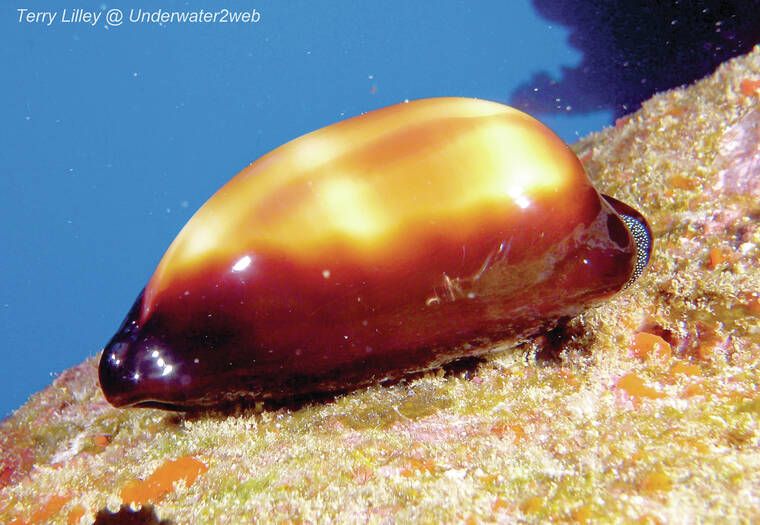As a marine biologist and professional scuba diver, I often wonder where all of the fish go along our coastline when we have giant surf.
Do they all head out to deeper water or maybe hide in caves below the reef where the surf won’t affect them? I had the chance a few days ago to do a study and shoot some video of marine life in 40 feet deep water off of Sharks Cove in O‘ahu between two large wave events. What I found was amazing.
We had a window of no surf for two days right between two, 20-foot swells, so I decided to go visit an underwater cave that is about 100 yards offshore.
In the summer, when the surf is flat, this cave is just packed filled with fish. Dozens of different fish species feed or hide in this large cave that is the size of a small house and is an excellent spot to shoot video and pictures. Once I dropped down from the sea surface and entered the dark cave, I turned on my bright video lights and was amazed because the cave looked deserted. There were no schools of fish and not much of anything to see until I took a closer look at the cave walls where I noticed a few shiny objects reflecting in my dive lights.
The inside walls of the cave were covered with live cowrie shells. I counted over 30 individual beautiful shells and five different species crawling around in the cave walls. It really was a beautiful sight and I shot some, one of a kind video, including my first ever movie clip of a live mole cowrie that was 4-inches long with a stunning gold, yellow and black shell.
Many of the cowrie shells were covered by the inner part of their body that is called the mantle. This soft fleshy foot comes out of the shell and covers the top of the cowrie polishing the shell. This makes the cowrie smooth and beautiful. I shot video of the large rare tiger cowrie, reticulated cowrie, leviathan cowries and even a few granulated cowries.
The live cowrie shells feed on live sponges and algae that grows on cave walls, and due to the constant large surf this winter they probably have not been able to feed much. During the big surf, the hard cowrie can cram itself back in a crack in the reef and be safe from the waves, and having two days with no surf they may have all come out to feed at the same time.
As scientists, we still know very little about the lives and behaviour of our marine life species. This dive in an offshore cave with dozens of live cowrie shells felt like entering a whole different world. I just finished an amazing movie about live shells that live out on the Hawaiian reef and you can take an underwater tour of the shell’s watery home up at https://tgilinks.com/4a25UYU. You may just see something in the movie that you have never seen before as some of these shells have never had a 4K movie done about their secret lives.
•••
Terry Lilley is a marine biologist living in Hanalei Kaua‘i and co-founder of Reef Guardians Hawai‘i, a nonprofit on a mission to provide education and resources to protect the coral reef. To donate to Reef Guardians Hawaii go to www.reefguardianshawaii.org.





